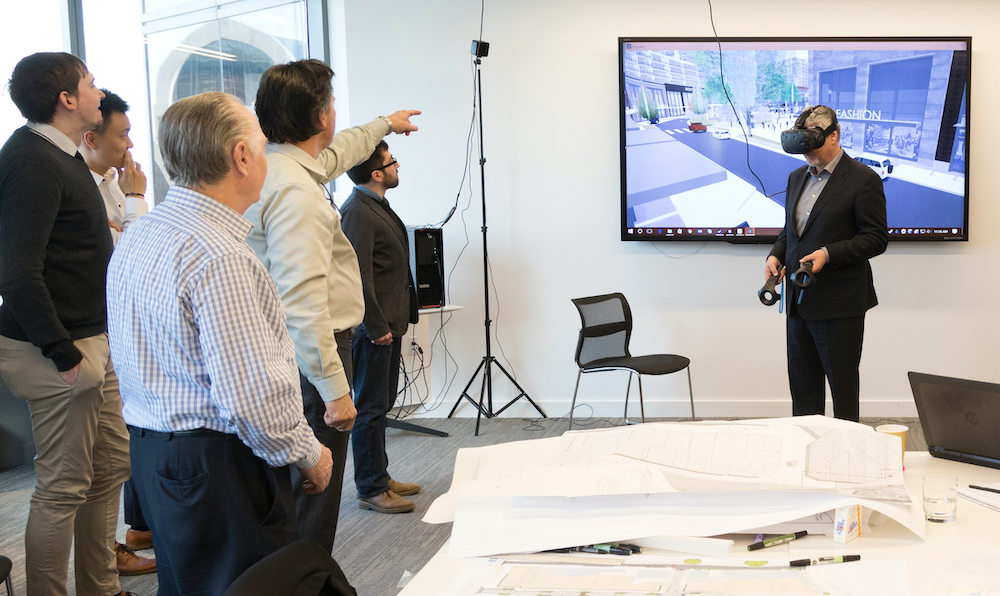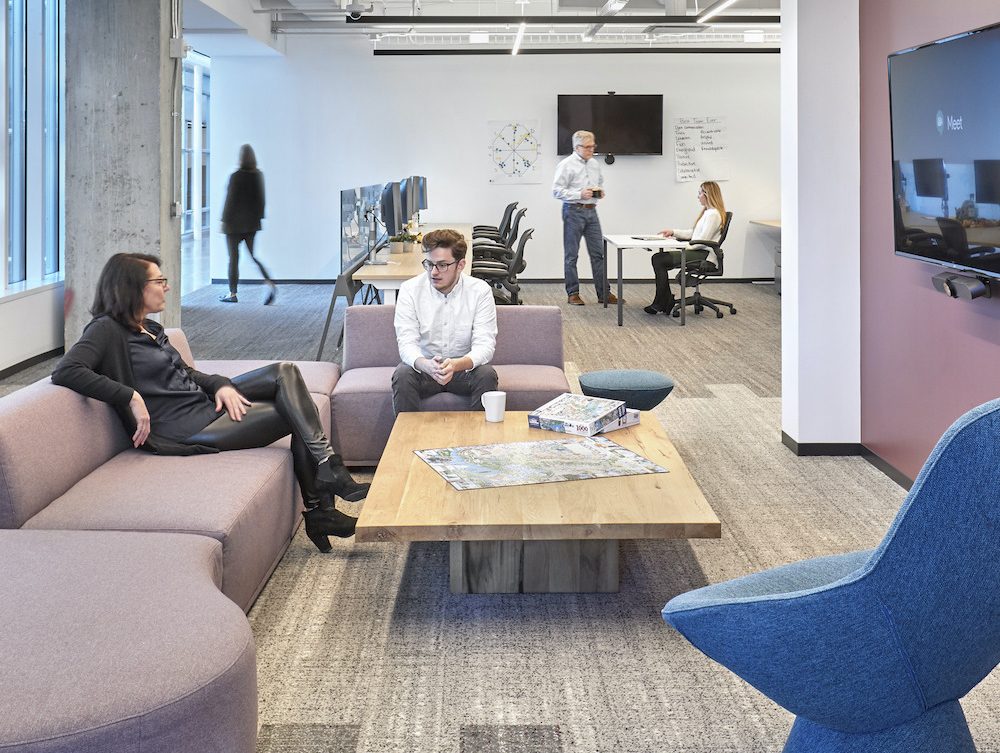Liz Wozny of CRTKL explains why promoting mentorship in remote and hybrid environments will help maximize meaningful interactions.

The Current State of Work
Whether at work, school or at home, the pandemic has necessitated significant effort to maintain a sense of our previous normalcy. In the workplace, much of the current conversation is centered around remote and hybrid typologies, including how to effectively bridge the gap between the physical and digital worlds. For those who have been part of the workforce for a significant period of time, the change might not be as impactful. Sure, usual tasks are being completed from home and co-worker interaction becomes more infrequent, but the baseline understanding of assigned work, developed through experience in the workplace, remains the same. This understanding is most likely the culmination of intense observation, reflection, and mentorship.
For junior employees, it’s hard to understate how important mentorship is. Direct communication with supervisors and senior team members is crucial for developing the necessary skills and insights to outperform and progress within an organization. This raises an important question—in what ways can interior architecture enable the holistic experience of physical work and mentorship to employees that are primarily working remotely?

Ensuring Equity of (Remote) Experience
Technology has its own set of limitations to effectively replicate the traditional experience of the physical office. However, the simplest way to enhance the day-to-day experience is by embracing digital tools for real-time, verbal collaboration. Applications like Miro and Bluebeam keep employees active and engaged through real-time collaboration on various types of work. Whether it is maintained through video conferencing applications, a constant line of communication is crucial for making entry-level employees feel included and part of the organization. Appropriate use of these platforms to bridge the gap between physical and virtual requires the strategic implementation of design and technology.
Spaces with adequate lighting and acoustics are required for meetings to occur without interruptions or distractions, and private focus rooms give mentees the necessary level of attention required for real development. Thicker, sound-proof walls that absorb sound, as well as the positioning of these private rooms in relation to ambient noise are all important points of attention. Finding the right mix of collaborative space for those in the office, versus private space allows for clear communication with their remote counterparts.
Innovative equipment like the Owl Labs 360 camera provide all-inclusive views of the rooms in which they reside. This ensures that remote team members can see, hear, and feel more involved with what they see on the other side of the screen. Further, the application of 3D models, created through the utilization of multiple cameras, allows designers to meaningfully explore digital versions of ongoing projects and potential locations. The importance of understanding a space during all phases of design is crucial in modern architecture, and digital solutions are rapidly increasing in usefulness. For a profession that also often hinges on tactile feedback (for something like a material sample), high-quality cameras to communicate both color and texture are important. Suitable mentorship initiatives for remote workers depend on the successful use of technology, which is accommodated through updated design choices.

Promoting Open Environments
Although virtual conversation presents a barrier to effective communication, it also provides benefits in its ability to break down otherwise hard to surmount differences between team members. For instance, entry-level employees might not feel comfortable approaching a senior leader in person, but virtual communication simplifies the process by breaking down any walls, imposed by a hierarchical structure. This encourages confidence over time and ultimately provides an immense opportunity for growth and development.
When work is primarily remote/hybrid environments, leaders must maximize facetime with team members as much as possible. Where previously it may have been prohibitive for team members to attend a far-away meeting, the opportunity to join and shadow conversations at will is ever present to video conferencing. Maximizing facetime virtually and in-person helps form stronger relationships that have tangible benefits both interpersonally and for work.
Because time in the physical space is limited, office design should promote open environments and access to coworkers. Clear sight lines throughout a space provide a sense of visibility and openness that translates itself into company culture. Glass partitions and lower workstation panels promote openness and their movable nature allows them to be adjusted as needed. As so much of what is learned by junior associates comes from listening and observing the actions of those around them, office design should work to break down barriers.

Enhanced Outcomes
While working remotely initially put us on a level playing field in terms of our engagement with work, the start of the transition back to the office has exacerbated disparities between different types of workers. But promoting mentorship in remote and hybrid environments boils down to one simple goal: maximizing meaningful interactions. The level of meaning that an interaction has is not determined by the location or medium through which it occurs, but rather the intent and conviction of those communicating with one another.
Making sure to check-in regularly with junior team members and utilizing digital tools as needed, when compounded with proper workplace design, can convincingly recreate the experience that one gleans from typical in-person interactions. At the office, breaking down physical barriers in tangible ways can also break down mental barriers to communication that often get in our way. However you view it, the present represents an exciting time to examine the realities we currently face, and to find solutions that best address the needs of modern team members.
There’s truly no substitute for in-person experiences and interactions. But while providing guidance for the growth of junior team members has become more complicated in a remote environment, it has also become easier in certain respects. Either way, nurturing the personal and professional development of team members remains important to the overall strength of an organization. Now more than ever we must devote our attention to uplifting those who need guidance the most—our entry and junior-level associates working primarily from home. As we move forward, organizations will continue to find ways to conquer the chasm between remote and traditional work through the strategic use of design and technology.


